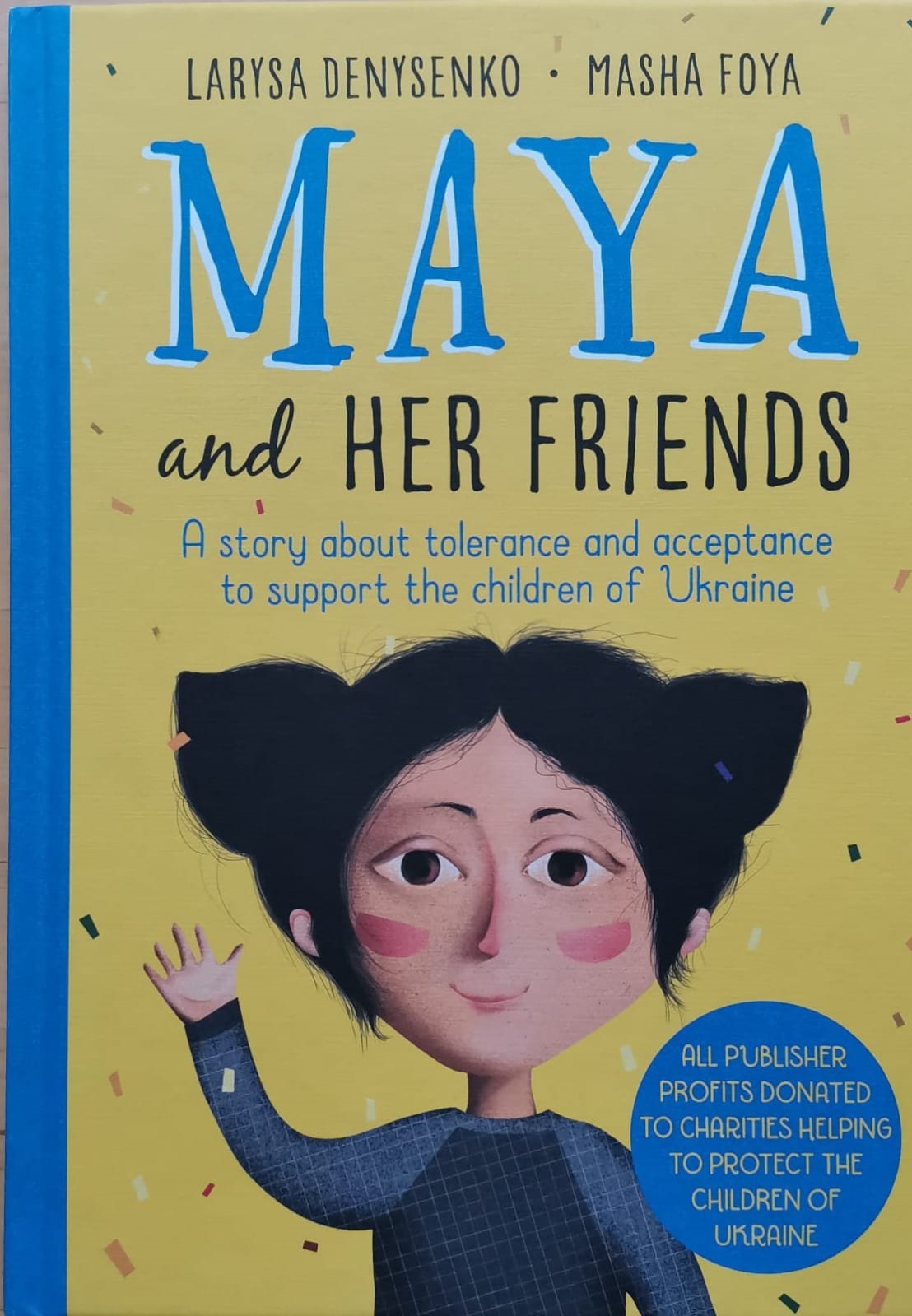Maya and Her Friends: A voice to shun the war and normalize diversity. By Sadia Zafrin
Published: 23 May 2023
Blog by CLMC student Sadia Zafrin
Maya and her Friends, originally published in Ukraine as Maya and her Mums, is written from the first-person point of view of the protagonist, Maya, a nine-year-old girl. She introduces herself and her sixteen classmates to the readers while sharing her views on love, respect, and family. Maya talks about her classmates and their diverse families. Their class teacher, Miss Yulia, appears many times in the text, though she is not introduced separately.
Keeping the tension of the war in the background, the book celebrates diversity and differences. For example, Sophiya ‘the first’ and Solomia are test-tube babies and Sophiya ‘the third’ lost her father in the war. In addition, Rayis is Crimean Tatar, Petro is Romani, and Maya has two mothers. Denysenko’s book covers the many socio-psychological issues which these children are confronted with. For instance, it addresses their belonging to different family structures, or having to be displaced in times of war. Janet Evans, who has worked on challenging and controversial picturebooks, writes: “In reality, many young children have to deal with troubling, personal problems on a day-to-day basis in their own lives” (2015, p. 5). In Maya and her Friends, for example, we see Kyrylo who lives away from her parents and even stayed in an orphanage for a while; or Nastya and Nazar who live without their father and they do not know where he is.
Denysenko redefines the idea of love, respect, acceptance and tolerance towards others through presenting children's perspectives. Whatever is complex and controversial for adults can be sorted if they follow Maya’s formula: “the most important thing is to love and respect one another”.
True love does not require blood relations and this is evident in Yeva’s relationship with her step-dad and Tanya’s love for Levko, who was adopted by her parents. In this way, the book deconstructs some common ideas about family, such as the one that being an orphan involves having no relatives. One may have parents but, still, one may stay in an orphanage like Kyrylo or stay with a grandma like Khrystyna. On the other hand, one may have more than two parents as Tymko has, yet lack attention.
This picturebook, written in 2017, does not explicitly show the violence and suffering of war, although the introduction for the 2022 edition, vividly pictures the war. Denysenko wrote the introduction at home in Kyiv, while hiding from the Russian army with her mother and dog. In very moving part of the book, she talks about the Maya and her friends’ current situation as a consequence of the war: one might be praying in the bomb shelter, another might have lost a family member, or living as a refugee.
The picturebook was written before the escalation of the Russian war on Ukraine, but tensions between the countries were already extremely high, as Denysenko writes in the introduction: “Since 2014, Ukraine has been conducting an anti-terrorist operation and is trying to get people back to their homes” . Maya and Her Friends shows how political instability and war affect children’s lives, for example, Sophiya ‘the third’ had to leave Luhansk and come to Kyiv; she lost her father in the war, but she believes he will be found one day.
The child’s perspective and sensitivity in describing her classmates means that the picturebook does not become didactic but rather facilitates a conversation with child readers from a range of families and social backgrounds, celebrating friendship despite differences. In Maya’s own words, “just because somebody’s life is different from yours, that is no excuse for sneering and bullying”.
As well as writing for children, Denysenko is a Ukrainian human rights activist, lawyer, and TV and radio journalist. She tells the story of Ukrainian children and their families through a journalistic style, which remains entertaining for her young audience. She injects both humor and humanity into her text with her playful language. For instance, Maya talks about the three girls named Sophiya in her class, saying they can create “Sophiyahavoc”. Denysenko’s colloquial style makes the book more inclusive and engaging for young readers, engaging them with questions such as, “Do you have a secret?”, “How many Ukrainian words do you know?” “Do you like traveling?”.
As Denysenko says, “war is always against children”. The book shares an anti-war message, inviting adults to put an end to antagonism between different races and nations. Despite referring to some of the impacts of the war on the characters, the tone remains optimistic, reflected in the words of Maya’s teacher, Miss Yuliya: “Every war must come to an end someday, and people ought to be searched for until they are found.”
Her hopeful words recall Anne Frank’s words from her famous diary, written while she was in hiding during the Second World War. On May 26th, 1944, she wrote: “We still love life, we haven’t yet forgotten the voice of nature, and we keep hoping, hoping for…everything” (Frank, 1991).
In the current world, this book shares the message of acceptance and tolerance not only with children but also with adults, by presenting Maya as a young girl who respects and normalizes diversity and differences. By buying this book, in addition to sharing this message, we can contribute to the protection of victims of the war, given that the publisher’s profits are donated to the project of helping children in Ukraine.
Book Details
Denysenko, L.V. (auth.) and Foya, M. (illust.) (2022). Maya and Her Friends. London: Studio Press - Bonnier Books.
Evans, J. ed., 2015. Challenging and controversial picturebooks: Creative and critical responses to visual texts. Routledge.
Frank, A.(1991).Frank, O.H. and Pressler, M. (ed.) (1995).The Diary of a Young Girl: The Definitive Edition. Translated by Massotty, S. USA: Bantam Doubleday Publishing Group.

First published: 23 May 2023

